As global monoculture erodes cultural diversity, the diversity of tribal festivals and rituals is a reminder that humans have different insights, different priorities, and choose other - successful - ways of living.
For many tribes, life is lived through ritual.
Rituals are held in honor of the lands that sustain tribal peoples and the spirits that watch over them. They mark the passing of seasons, the fertility of crops and the cycles of human life. They are used to purify the earth, set the sun on its seasonal course, encourage the melting snows to irrigate crops and bring success to an Amazonian hunt.
When tribal peoples lose their lands, as they have done for centuries, they lose their livelihoods. But they also lose the bedrock of their identity as a people, and the inspiration for their festivals.
When tribal peoples are torn away from the lands that inspire their songs, dances, myths and memories, deep depression often follows. These are the creative touchstones by which they know themselves; the rituals represent a myriad imaginative ways of interpreting life. Without their homelands, the fabric of their identity collapses.
When the Bushmen dance to the rhythmic beat of the trance dance, when the Hopi sing for snow and the Enawene Nawe take up their flutes at dawn, they are celebrating their connections to each other, and to the Earth. Separation from their lands is catastrophic, but the solution to their problems - the recognition of land rights - is simple.
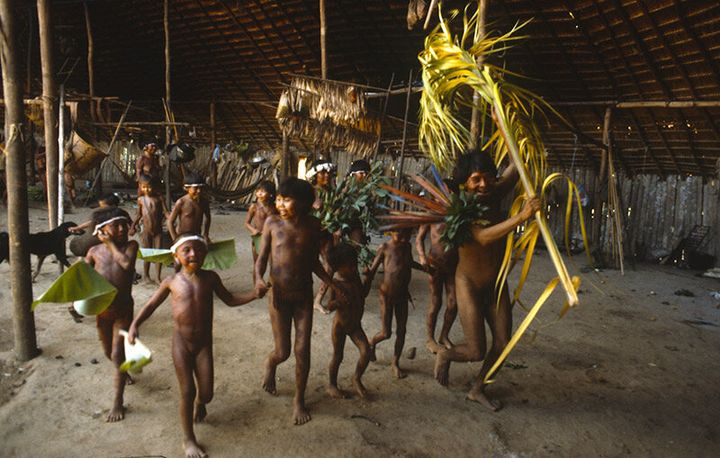
Yanomami Festival
(Copyright: Mirella Ricciardi / Survival)
We sing with different voices, but we are singing about the same Earth.
-Davi Kopenawa Yanomami.

Sacred Ritual of the Awa
(Copyright: Lewis Davies / Survival)
The Awá tribe of Brazil live between the equatorial forests of Amazonia to the west and the eastern savannahs.
During their full moon ritual, men leave Earth behind as they travel to the iwa, the domain of the earth spirits. Their dark hair speckled white with king vulture feathers, the men commune with the spirits through a chant-induced trance, during a sacred ritual that lasts until dawn.
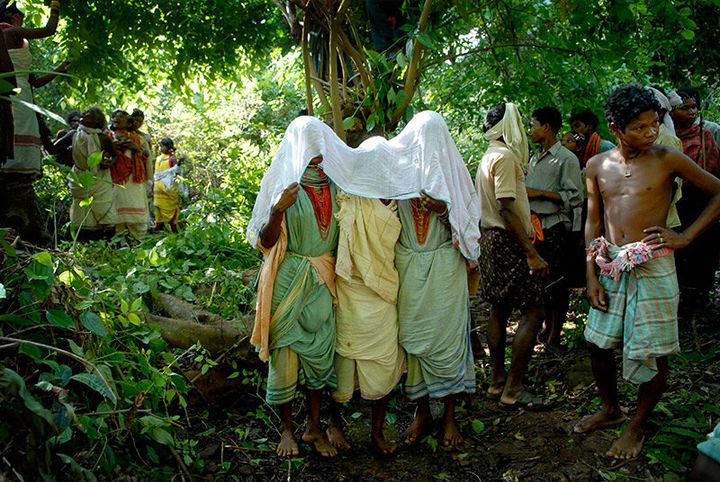
Dongria Kondh Wedding
(Copyright: Jason Taylor / Survival International)
When the air is filled with the dusty smell of turmeric and young women have used the spice to stain their arms a rich yellow, it is the time of a Dongria Kondh wedding.
With flowers in their hair and coloured bands around their necks, men and women whirl and spin in circles. At dusk, the veiled bride emerges from her family home and is escorted through the darkening forest to the groom's village.
The wedding guests follow, dancing, beating their hand-made drums and singing long into the night.
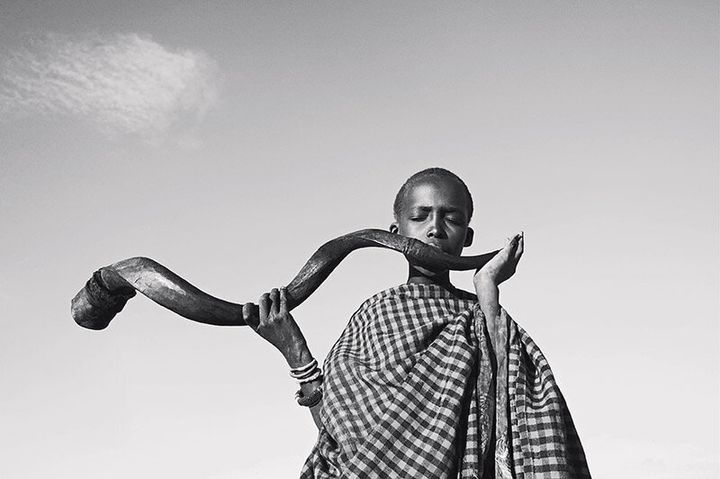
Maasai with Kudu Horn
(Copyright: Caroline Halley des Fontaines / Survival)
Tribal festivals also honor the different cycles of human life.
In East Africa, a young Maasai boy blows into the spiraling horn of a greater kudu antelope to summon morans for the e unoto ceremony, which heralds the transition of the teenage moran into manhood.
The ceremony involves several days of singing and dancing.
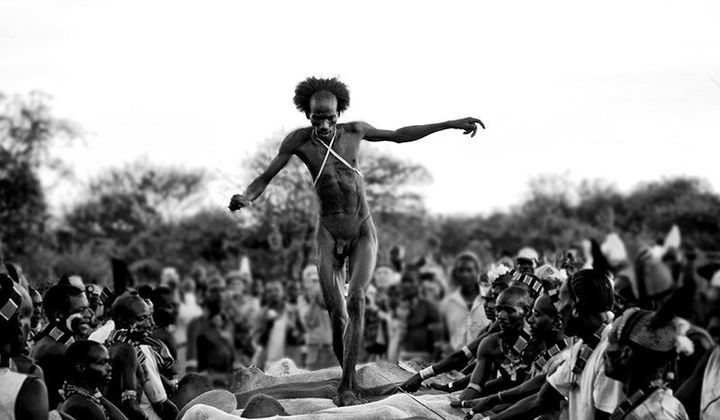
Hamar Ceremony
(Copyright: Mario Gerth / Survival)
In Ethiopia, before a Hamar man can marry, he needs to race over a line of cattle.
Smeared with dung to give him strength - the cattle are also covered in dung, which makes them slippery - a man must run over up to 30 cattle four times, without falling. If successful, the man becomes a Maza; men who have successfully completed this rite of passage.
The Hamar and other tribes have lived in the Lower Omo valley for centuries; the region is believed to have been a cultural crossroads for thousands of years, where a vast diversity of migrating peoples have converged.
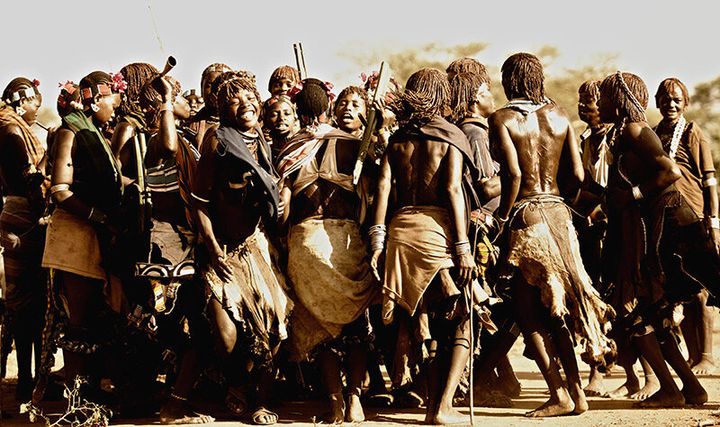
© Ingetje Tadros / Survival International
Before the cattle-jumping ceremony, Hamar female women blow their horns and shout taunts to the Mauza, a group of men who have already completed the ceremony, and who will whip the women. Hamar women regard the scars as a proof of devotion to their husbands.
Today, however, the tribes are threatened by a massive hydroelectric dam, and associated land grabs for plantations. The dam will block the southwestern part of the river, so ending its natural flood cycle and jeopardizing the tribes' flood-retreat cultivation methods.
There is no singing and dancing along the Omo River now, a tribesman told Survival. The people are too hungry. The kids are quiet.
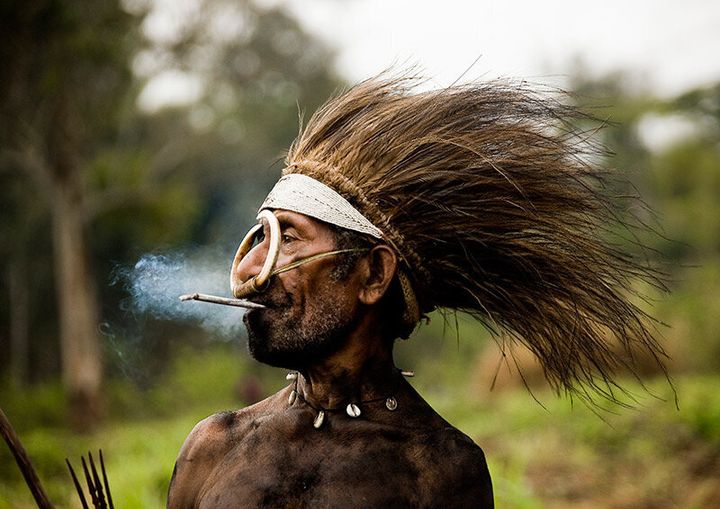
Papuan Tribal Festival
(Copyright: Eric Lafforgue / Survival)
When tribal peoples are evicted from their homes; when their lands are destroyed in the name of 'progress,' their suffering is obvious: alcoholism, chronic diseases, infant mortality and unemployment are, more often than not, the effects of being forcibly assimilated into mainstream societies.
